
Natasha Poletaeva
44 years, Russia
When Mountains Tells You to Turn Back
The large number of accidents with famous climbers agitate mountaineering community for second year straight. While on the high altitudes, many alpinists fall victims of various circumstances, which were caused, among other things, by their own mistakes.
As an example, let us remind ourselves of Tomek Mackiewicz’s death on Nanga Parbat during the winter of 2018, the fall of Rick Allen on the descent from Broad Peak, Sergey Glazunov’s fatality on Latok I as well as a rescue operation on Nanga Parbat in the beginning of 2019 which ended tragically.
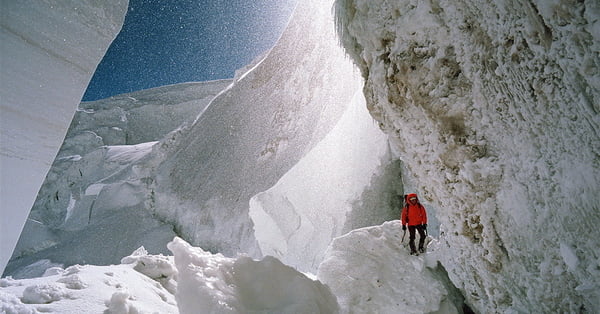
Source of the interview (in Russian) you can find by the link in Sport-Marafon sport store blog.
These are just a few high-profile examples that are united by a number of factors: big mountains, altitude, technical complexity of the route and death on the descent. During the summer 2019, events at Everest further fueled the drama, as 11 people died meters away from the top when descending.
How we can explain these cases? — Something was pulling people up and prevented them from turning back at the right time. But what does "right time" mean for a person who is on route to which he or she has been preparing for a long time, that took a lot of effort, time, material and moral resources?
Read the story by Victor Koval, experienced Russian climber.
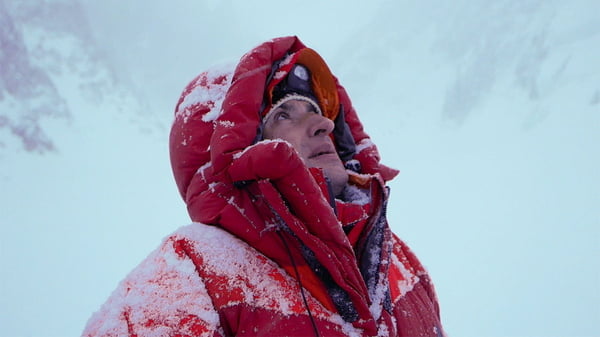
About the narrator
Victor Koval was born in 1981 in Saint-Petersburg. He is Master of Sports in alpinism, alpinist instructor, “Snow Leopard” and Piolet D’Or of Russia nominee for new route on north face of Cholatse (Khumbu region, Nepalese Himalaya, 2010). His climbing resume includes Lhotse Peak, Victory’s Peak by the North-Eastern buttress, winter expedition to Nanga Parbat 2014/2015, Latok I in Karakorum in 2018.
Preparing to the Ascent
In recent years mountains became much more accessible — you look up the mountain on the Internet, buy a plane ticket — and there you go; probably because of this apparent accessibility, the mountains have become like-kind stadium for many, and mountaineering began to be treated as fitness. You jog a lot, go to the climbing gym, buy the coolest gear, boots like one of the Huber brothers definitely had, and then — hello, big mountains!
But mountaineering requires a comprehensive approach to the organization of climbing. In addition to excellent physical shape and suitable equipment, one needs some intellectual component, that will allow to make the right decisions in an ever-changing environment. You're not on the treadmill or at the stadium, where there is a simple physiological task — to train the body and improve physical characteristics. Although some may find it surprising, I would compare mountaineering to chess, in the way that you have to calculate different options and combinations, and doing so in advance. Many alpinists have long adopted such model, and for many it is not only important which mountain one has climbed, but also how they did it, as there are ‘good’ and ‘bad’ styles of doing so.
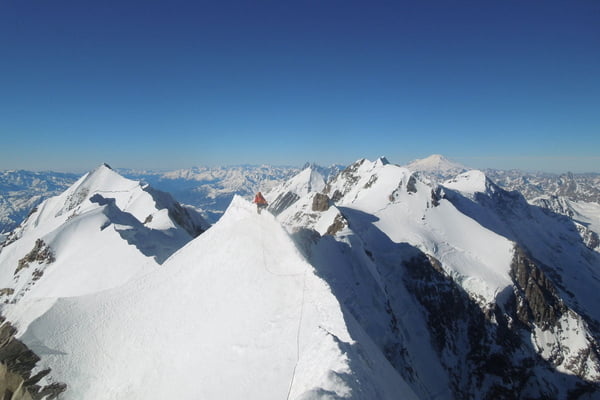
Each mountain has its own “keys”. Why had Latok I stayed unclimbed for over 40 years? It was not because some fools went there, quite the opposite - those were experienced and even legendary alpinists, but all of them turned back as they understood that means and methods, chosen in these particular circumstances, were not suitable, and in such context they had to descent.
During the Ascent
You should be aware that the human body feels the altitude below and above 7100 completely differently. That is why the Lenin Peak is simpler than Victory’s Peak, even though the classic route on Victory’s Peak is just trekking with only a few technical obstacles, — it is the lack of oxygen and hypoxia that make it so hard.
But while climbing Lenin Peak you stay overnight on 6100 m, climbing higher then 7000 m only for 2-3 hours. You torture your body a little bit, but it is then followed by a happy descent!
Why is Victory’s Peak different? It is because there one has to sleep above 7000 m twice. Why do 100 people per season climb Korzhenevskaya Peak, but only 20 do Communism Peak? Because in the latter case one should overnight at 6900 m, and after alike sleep not everyone feels the condition for climbing and therefore goes down.
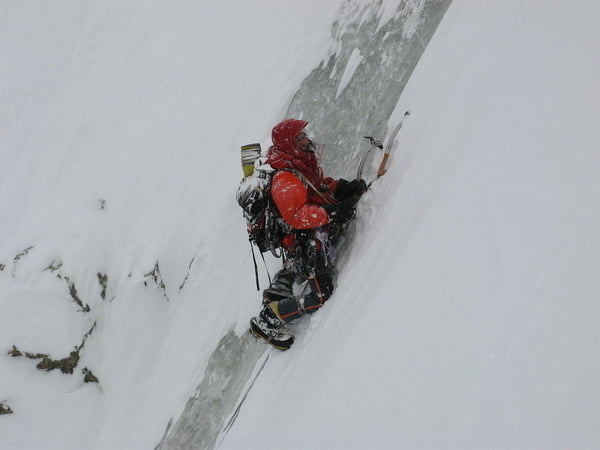
Such conditions as hypoxia — cerebral and pulmonary edema — occur while a person is asleep. The heart rate slows down, blood circulates more slowly, and the delivery of oxygen to the brain is also slower.
Such difference in the amount of oxygen is enough for a person to experience significant health issues, which tend to occur overnight; alpinists find themselves severely sick to an extent of a coma or even an accidental death — all of which could happen while the body was relaxed; as the heart stops working actively, the oxygen levels in the vital organs decrease.
Technical Work at the Altitude
In my opinion, before climbing technically difficult route in big mountains, you should first climb a mountain of comparable altitude. Additionally, if you've never been up on the altitude in the summer, you should climb it in winter. Otherwise, it will be not climbing, but unnecessary heroism, the struggle for life, while the correctly acclimatized athlete may not even notice climbing 10 ropes per day.
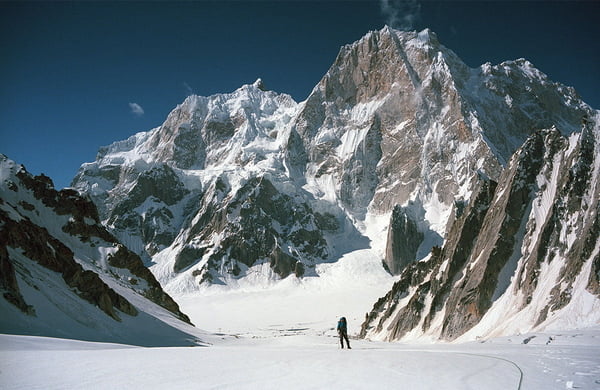
Within understanding the human physiology, there has been a long-going study acclimatization. Thus all the strongest climbers spend a lot of time acclimatizing by trekking and climbing for at least two months before serious high-altitude projects. And look at the recent fashion of “climbing from the plane", when the simplest trekking is perceived as acclimatization (although it is not). Here comes an emergency condition, which two generations of climbers have already successfully passed.
The Time to Turn Back
The sign that it is time to go back down is very simple to spot. At the foot of the mountain you should have a detailed plan through which you must realize what you have to do almost in steps. While on route, you identify plans with your ascent. And if something goes wrong, you have to assess whether you're willing to take risks, or not. Not ready? Go down.
For example, you thought that there would be ice on route, and then it is rocks, the ice melted. Or you thought you were going to climb 10 ropes a day, and took supplies for 5 days, but for some reason climb only one or two ropes a day. You must immediately solve the equation: if you have a speed of 5 times lower, then you will climb not in 5 days, but in 25. And you prepared supplies for 5 days... What will happen on the 7th day? Does it make sense to continue the ascent? That's it, that’s all.
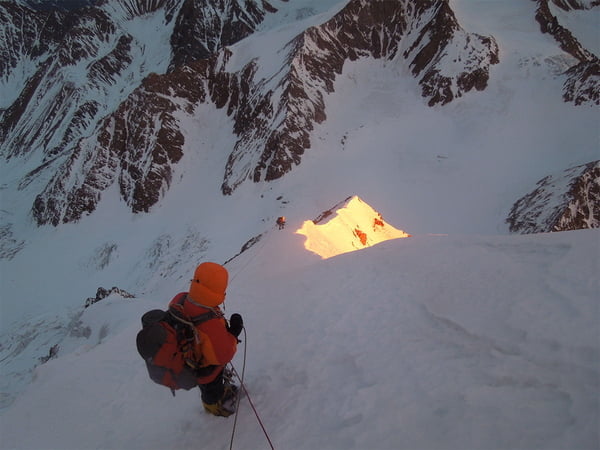
Resume
About self-esteem
One needs to understand that no matter how strong, agile and healthy you are, from the nature’s point of view you are nothing. You can adjust to the situation, use the tools, but if it is not enough — in some situations you just must go back.
Imagine if a hunter went hunting a hare, and there were bears in the forest, and hunter was like, "Well, okay, I have a shotgun for a hare, but I will forage for a bear"! — No one will do so in theirs right mind. But for some reason it became possible in mountaineering. Maybe sometimes people just stop thinking?
Choosing Your Climbing Partner
Of course it is better to go with trusted partners, but unfortunately modern life is such, that somebody with whom you went through hell and high water, can often not bear company. But the choice of a climbing partner is certainly very important. You should go to extra-class mountain only with a person you know really well. Recently, there have been a lot of inverse examples, and results were also similar.
In any team there is always an inspirer, who makes you move forward. There should also be a "skeptic", who can say at a critical moment: "Sorry, guys, we’re having it all wrong"! So, in terms of motivation, people should balance each other.
Vanished Hopes
It happens: one’s expectations may not be manifested in real life as one wanted to. And if climbing turns out more difficult than planned, and the reality is different from initial idea, you have to make a tough decision. As such, do not forget to ask yourself a question "What will happen, if...?” more often.
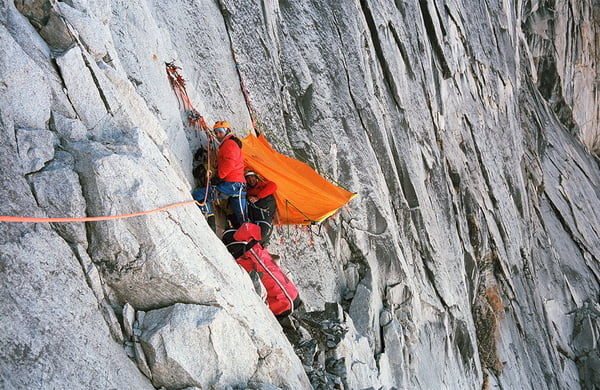
I turned back many times, sometimes without even going on the route. It's a pity, of course, but it is better this way. It happened at times that we did not even see the mountain, and I understood already that we would not climb it.
What About the Vanity?
In order to deal with sports vanity you better go to a shrink. There is a more global question of goal-setting to climber, as well as any other person: what do you want to get from your life? If you do not understand yourself, this unnecessary tinsel in the form of a Piolet D’Or or other award can put some really important values at risk.
Compilation: Marina Sivokon. Translation: Natasha Poletaeva





